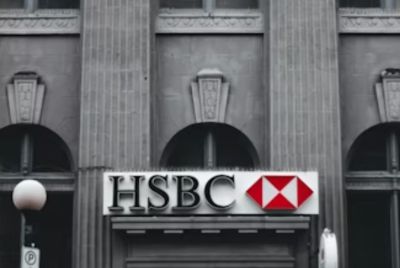Burgeoning UK consumer credit should raise 'red flags' for lenders
New report says recent double-digit annual growth rate in lending would be unsustainable.

Benign economic conditions and accommodative monetary policy have maintained UK households' debt-servicing costs and banks' loss rates at particularly low levels, but the situation cannot last according to a new report.
In a note to its clients, S&P Global Ratings said at this stage, those lenders that have loosened their lending standards or grown their loan books quickly have the potential to be over-exposed "when supportive economic conditions deteriorate"
The assessment comes with the Bank of England poised to raise interest rates in the eyes of many.
UK consumer credit has long been an attractive market for banks and non-bank financial institutions (NBFIs) alike.
It is diverse and growing, worth over £200bn, and can offer attractive risk-adjusted returns even when interest rates are low. While the global ratings agency considers near-term credit risk to be low, high credit growth in 2018 could "negatively affect some UK bank and NBFI ratings" it noted.
"After a period of retrenchment, the UK consumer credit market has been expanding rapidly since 2013, attracting the attention of new market entrants, but also intensifying prudential and conduct scrutiny from regulators," said S&P Global Ratings credit analyst Joseph Godsmark.
"Although we consider that near-term credit risk remains low, past experience shows that lenders find it hard to avoid inherent cyclicality in consumer credit, and the impact can be severe. Furthermore, banks' discipline in constraining risk appetite for new underwriting and risk-based pricing in a hot market has not been seriously tested since the financial crisis," he added.
Loose monetary policy and cheap central bank term funding schemes have supported consumer credit supply and demand. Although recent data suggest growth is slowing, annual growth rates of close to 10% since the start of 2016 have significantly outpaced UK nominal GDP and household income growth.
S&P thinks this high growth is partly explained by a structural shift in how consumers finance vehicles, which now make up about 30% of the consumer credit stock, with sustained growth rates of above 15% since 2014.
"However, we believe that lenders have been competing on pricing and underwriting standards across all aspects of consumer credit, including an enhanced role for NBFI lenders, which has also boosted overall growth," the ratings agency said.
Lower credit quality and poorly seasoned portfolios could in time be revealed in higher loss rates and higher net consumer credit charge-offs, particularly if economic conditions deteriorate.
The Bank of England's recent assessment of stressed losses on consumer credit lending, brought forward as part of its annual stress test results, also indicates that the regulator is concerned that the resilience of these portfolios may be reducing.
S&P expects that most major banks' general cautiousness in lending to new, non-franchise customers, combined with the regulatory reviews underway, may partially alleviate this risk.
"That is why any potential risk that consumer credit poses to UK financial institution ratings will likely be specific to certain companies, rather than system-wide," it concluded.






















